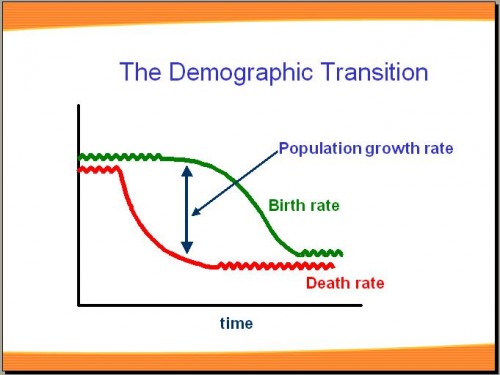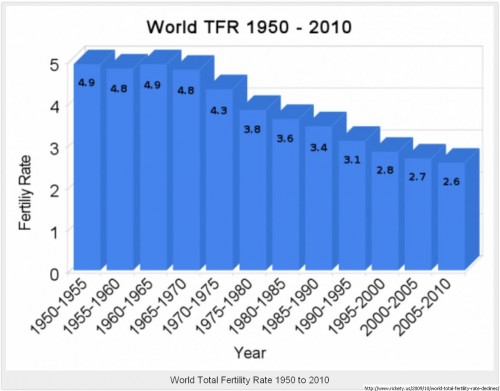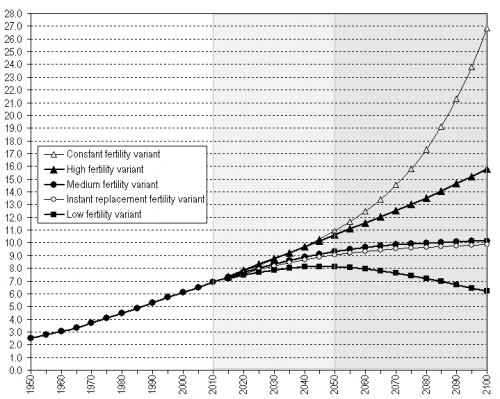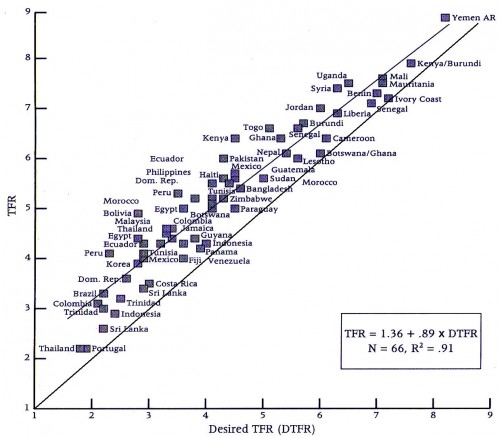
In 1 A.D., the human population on Earth was steady at 200 million.
In 1804, in the midst of the Industrial Revolution, this count passed one billion.
In 2011, just over 200 years later, the population soared to seven billion.
The air in cities like Beijing and Shenzhen is thick with pollutants sputtered from millions of automobile exhaust pipes. The aquifers under cities in India are drying up as thousands of wells pump up groundwater to satiate their citizens’ thirst. In response to a growing global demand for food, industrialized farms are replacing small-scale agriculture, thus increasing the volume of pesticides and fertilizers released into the environment. Our exploding population is placing strenuous and unsustainable demands on our planet. What does the future look like in such a world of expanding population? Is this process reversible, and how do we go about fixing the environmental damages that have already been done? These are precisely the kinds of questions that researchers around the globe, including several at Yale University, are trying to tackle.

Population Dynamics from Malthus to the Modern Day
Thomas Malthus, a late 18th century demographer, noted astutely that populations increase rapidly: not in an arithmetic fashion, but in a geometric one. This realization greatly concerned him, and he questioned the sustainability of continuing the given population trend. Today, with a current world population of 7 billion growing at 1.4 percent annually, some quick math will demonstrate the importance of Malthus’s observation and the validity of his concern.
Despite current fertility levels being at an unprecedented low, they still remain above replacement level at an average of 2.5 children per couple. This trend, along with decreasing death rates due to advances in modern medicine, water, and sanitation, has contributed to the high rate of population growth. If fertility remains constant at current levels, population projections from the UN show that by 2100 the population will reach 27 billion; however, if fertility continues to drop, other models project population counts anywhere between 6 billion to 16 billion by 2100.
Looking towards the future, it is uncertain which path our population will follow. Robert Wyman, Professor of Molecular, Cellular, and Developmental Biology, stated that “the range [of possibilities] is enormous … but we just don’t know … and it is very scary.” In his opinion, the projection featuring constant fertility is the most likely to occur, as the other models assume quite a significant drop in fertility that will prove difficult to achieve.

The Anthropocene Era: Impacts of an Expanding Human Population
Both an explosion in the human population and the increasing prevalence of technology have led to the start of what has been dubbed the Anthropocene era, a term stemming from the Greek roots anthropo- (human) and -cene (new) that examines the extent to which human activity has impacted ecosystems across the planet.
Climate change and loss of biodiversity have proven to be two of the strongest examples of many human-induced phenomena. At the start of the Holocene, the preindustrial era, 280 parts per million (ppm) of CO2 existed in the atmosphere. As of 2012, this number has spiked to 395 ppm of CO2. This massive increase is primarily due to the combustion of fossil fuels such as coal, oil, and gas, which are used to power automobiles, electrical plants, and other utilities. Recent trends in land use have also contributed to global climate change, as one half of the world’s original forests have been cleared, thereby eliminating one of the largest carbon sinks on the planet.
Wyman, however, is most concerned about an even more fundamental resource. “The first thing to give out will be the aquifers,” he stated while expressing his great concern regarding freshwater scarcity. As rivers become increasingly polluted, and as more groundwater is drawn up from aquifers to meet the demands of an expanding population, water reserves are bound to eventually run dry. Chennai, a city in the south of India, has already experienced a number of “water outages” in the summer months, during which the local government was forced to bring in water from surrounding Indian states to provide for their citizens.

Hope for Ecological Recovery
It is clear that our detrimental behaviors need to be stopped, but the greater question is: can we reverse the damage already done?
A meta-analysis by Professor Oswald Schmitz of the Yale School of Forestry and Environmental Studies looked at the ability of ecological systems to recover from human disturbances and suggested some hope. Contrary to long-standing perceptions, Schmitz has discovered that ecosystems “can recover fairly quickly, in terms of half of a full human generation.”
According to Schmitz, it ultimately boils down to human will. A prime example is the 2010 BP oil spill in the Gulf of Mexico. The incredible amount of publicity surrounding this event pushed it to the forefront of the public’s attention. The general public ended up contributing a great deal of funds to the clean up. “In 20-30 years, things can recover pretty quickly,” he stated. “The reason things don’t recover is that people abandon them. If we actively put our mind to it, we can fix the damages.”
This finding provides some hope for the reversal of ecological damage that has already been inflicted. Further investigation is required to ascertain whether this ecological principle can be applied to issues such as water scarcity and air pollution, which may not be as self-correcting. Schmitz does however point out that, for the first time in history, humans are shifting their populations from rural areas to cities. In some countries such as the United States and China, the urban population exceeds the rural population. As more people aggregate into cities, there is a large amount of ongoing research to determine how to effectively carry out sustainable city development and growth. By taking advantage of the clustering of people in concentrated areas, resource use may be reduced. The building of sustainable cities may thus be able to reduce our negative impacts on the environment moving forward.

Consumption and Population Growth
There is more to the story here than sheer population growth. As the global economy continues to develop, people are coming to expect higher standards of living that are often more resource-intensive. Thus economic, cultural, and consumption related factors must also be considered in order to properly contextualize these environmental concerns.
As societies across the world become increasingly globalized and economies continue to develop, it is anticipated that everyone’s ability to consume is going to increase. One argument is that it is not the number of people, but rather their level of consumption that is the issue. Americans make up only 4 percent of the world population, and yet are responsible for 25 percent of the resources used globally. “What we have to do is think about needs and wants and consumption,” said Schmitz. “We have to have a conversation about when enough technology is enough. [This problem is] not a population issue directly, but rather a consequence of people wanting a high standard of living.” In his opinion, we as consumers must begin to think more consciously about the resources they waste, and companies must innovate ways to recycle within the already existent material stream.
Wyman, however, asserted that consumption is only an issue because our numbers are so large. If there were still 200 million people on the planet, we would be much less concerned with our levels of consumption. He stresses the aggregate global consumption rather than individual consumption. In his mind, the only true solution is reduction of the world population.

Future Actions: Moving Forward
Reducing energy, water, and materials consumption through conservation, efficiency, and green technologies are important steps in minimizing the effects of human population. However, Norman Borlaugh, the winner of the Nobel Peace Prize for his work in developing new plant strains that became the basis of the Green Revolution, stated in his acceptance speech that “there can be no permanent progress in the battle against hunger until the agencies that fight for increased food production and those that fight for population control unite in a common effort … United they can win a decisive and lasting victory to provide food and other amenities of a progressive civilization for the benefit of all mankind.” There are a number of ideas regarding how to achieve this control of the population.
“In order for the world population to stabilize, fertility has to come down,” said Wyman. To do this, the birth rate must be lowered by “elevating the autonomy of women to make life-changing decisions for themselves” through personal empowerment, education, and access to contraception. More than two-fifths of pregnancies worldwide are unintended, and data show that if these pregnancies were avoided that the average global childbearing numbers would immediately fall below those of replacement fertility. “The difference is quite significant … about a child and half,” said Wyman. “You don’t have to change hearts and minds … Family planning is the low-hanging fruit.”
There is an urgent need for change. Our rapid population growth — to the tune of one billion people every twelve years — has had substantial effects on the environment, modifying and shaping it in unprecedented and large-scale ways. If the population continues to increase this rapidly and no action is taken to mitigate its effects, the environment will continue to bend and strain until the Earth finally reaches its breaking point.
About the Author: Sophie Janaskie is a sophomore Environmental Engineering major in Ezra Stiles College. She is on the board of the Yale Public Health Coalition and works as a college coordinator at the Office of Sustainability.
Acknowledgements: The author would like to thank Professor Wyman and Professor Schmitz for their time and enthusiasm about their research.
